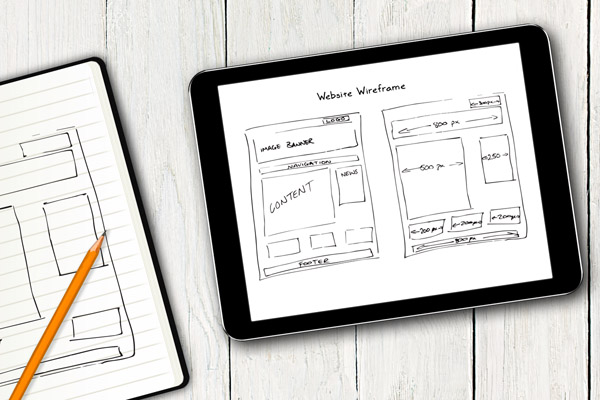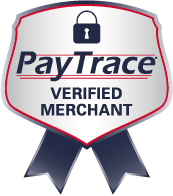For more information about marketing plans, or to schedule a free marketing plan consultation, please call (303) 357-5757, or e-mail dbc@dbcdigital.com.
5 Tips for Improving Your Marketing ROI
By Carie Sherman in partnership with DBC Digital
You know you need a website. And you’ve heard you should be on social media. Maybe you’ve bought some mailing lists … sent a few emails … snail-mailed a postcard. You’re doing everything the “experts” say you should — but you’re not seeing results for your efforts.
What gives?
If you’re like me — and many small and mid-sized business in Denver — it’s likely you lack a cohesive marketing plan. So before you invest another dollar in marketing your business, consider these tips for designing an effective plan that generates real results.
Tip #1: Know your business goals
Think of your marketing plan as a roadmap to business success. After all, if you don’t know where you want to go, how will you know when you’ve arrived?
Start with an overarching goal for your business. And make it S.M.A.R.T: Specific, Measurable, Achievable, Relevant, and Time Bound. For example: a not-so-smart goal might be:
“Bring in more revenue.”
In contrast, a SMART goal might be:
“Increase revenue by 10% by hiring three sales people tasked with adding one new client next month through cold-calling.”
It’s specific and measurable. Whether it’s achievable depends on a lot of factors: Is hiring in the budget? Will the addition of three new clients lead to a 10% increase? It seems relevant as a path to new business, and you’ve included timing as well. So, SMART it is. (And smart are you!)
Tip #2: Know your target audience.
Who is your ideal client? Someone with enough money to buy what you’re selling, of course. But it’s time you got super specific about the people who will most likely need your product or services. This isn’t the time to be vague. You need to be able to communicate to your targets using their language and pain points. Questions to consider:
- What does your ideal client “like” and “dislike”? For a business-to-business service, this might be “they like providers who have comprehensive reporting systems.” For a B2C product, the “like” might be, “they like widgets that are yellow with pineapple imprints.” And don’t forget to get specific about what they don’t like as well.
- What are the demographics of your ideal client? Common areas to consider include age, geographic location, level of education, gender, marital status, and occupation.
- What keeps your ideal client up at night? Consider the challenges they face. People only care about “what’s in it for me?” If you can prove to them you know what they are up against and that your product solves their problem, you’re a step closer to a sale.
Some businesses find it helpful to develop “personas” that serve as instant reminders of who your ideal client really is. This allows you to monitor every marketing tactic you later develop to make sure your marketing is speaking to the right person.
For example, let’s develop a persona for a neighborhood locally-owned coffee shop. We’ll call her Carie.
Carie is a 40-something year old freelance writer who lives on the east side of Denver. She likes supporting local businesses, dogs, and caffeinated beverages. She dislikes Starbucks and long drives. She’s educated, she works from home, and she loves to read. Her challenges include daily showers (she works from home!) and having no social life.
Now, imagine a door flyer or direct mail postcard that a local coffee shop might print to attract “Carie” to frequent their business. I’m seeing words like Dog Friendly! Frequent coffee buyer program! Walking distance from your home! Bookshelves brimming with new reads! Locally-owned! Plenty of outlets for your laptop! Stay all day and pretend you have friends! We don’t care if you smell!
You get the picture.
Tip #3: Know Your Business
In order to sell your product or service, you need to take an honest assessment of your business.
Questions to ask yourself include:
- How does your business solve your ideal client’s problem? The neighborhood coffee shop solves a number of “Carie’s” issues with their plethora of caffeinated beverages and crowds to help her feel less lonely. And she can bring her dog, so bonus!
- What do you do best? Maybe you provide your customers with the best customer service around by responding to every email within 15 minutes. Or that your product tastes great, is less filling, and 5% cheaper than the competition. Be specific.
- What’s not your strong suit? Unless you’re running the next Amazon, you don’t have to be everything to everyone. In fact, developing a niche can actually be a boon to your business. For example, say you provide background checks within 24 hours with a small staff of 10. Does it really make sense for your direct mail marketing postcard to large organizations that hire thousands of people per day?
- What’s going on in the marketplace that’s good for your business? According to DBC Digital’s CEO Greg Sherwood, small business owners are currently concerned with improving their websites, engaging prospects on social media, and adding resources through email marketing. If Denver small businesses are my target market as a writer, it’s probably not a good time for me to buy advertising that focuses on my stellar annual report-writing skills.
- What threats exist in the marketplace? Maybe the market is getting oversaturated with service providers who provide the identical service as you. Or there’s a new technology on the horizon that’s going to render your product obsolete.
Tip #4 Know Your Competition
Unless your business is a true unicorn in the market, you’ve got competition. It’s your job to know what they’re doing, how they’re doing it, and how your business compares. Stalk their websites and social media. Sign up for their email marketing newsletters.
Try to understand who their ideal clients are and how they’re engaging with them. What do they do better than you? What do you do better than them? Knowing everything you can about how they are marketing their business can help you develop tactics that set your business apart.
Tip #5 Make Marketing a Line Item on Your Budget
No product or service sells itself. That’s why you need to know how much money you can spend on marketing tactics, such as website design, social media marketing, and email marketing.
As a small business owner myself, I know its hard to justify spending money on things that, technically-speaking, I could do myself. But therein lies the problem: I -could- design my own website. But what would take me months to accomplish might take someone like DBC Digital a few weeks. By outsourcing some of my marketing, I can focus on the things I do well. And have a website that’s selling for me 24/7–quickly.
In addition, when analyzing any marketing tactic, keep in mind the potential ROI of your marketing investment. Consider how much your web redesign costs, relative to the amount of money you stand to make having a website that converts prospects into sales.
Here’s an example:
Joe the Lawn Guy had a local copy shop print 10,000 flyers he designed on his home computer. He buys a mailing list, and unknowingly mails info about his lawn services to a zip code that happens to be mostly apartments. It was a cheap marketing tool. But it was entirely ineffective.
Now, say Joe the Lawn Guy works with a company like DBC Digital to to design a print mailer that speaks directly to the concerns of his target market of middle aged, working parents who are too busy to mow their own lawns. And they develop a list to target 500 families in single family homes in a neighborhood with sprawling Kentucky Bluegrass lawns (and HOAs that require them to stay green!).
If Joe converts 10% of the 500 he mailed, that’s 50 new customers for his lawn business. Was it more of an investment than his 10,000 home-printed flyer? Sure. But 50 new customers he’ll retain for a number of years more than pays for the cost of a custom marketing campaign.
These tips, at first glance, might seem pretty basic. And you might have the answers to every question somewhere inside your head. But I’d encourage you to get some of this down on paper. Then when it comes time to invest in specific marketing tactics — web design, social media, email, print and design — you’ll have a way of evaluating whether you’re spending wisely.
Over the years, I’ve learned the hard way that throwing money at things without a clear marketing plan leads to disappointment. By taking a step back and developing a foundational roadmap to marketing success, you can ensure a return on your marketing investment.
About the Author, Carie Sherman
Carie Sherman is a Denver-based copywriter who helps socially-minded organizations communicate better.
Please note: DBC Digital is a full-service marketing agency in the Denver metro area. We’re in Centennial, just off I-25 and Dry Creek. We work with clients throughout Colorado and the U.S., in a variety of industries, including: real estate, financial, insurance, and mortgage.











